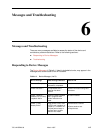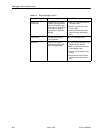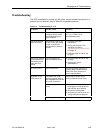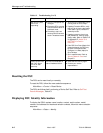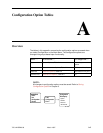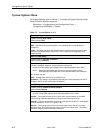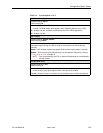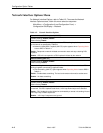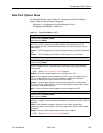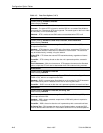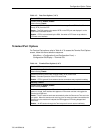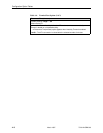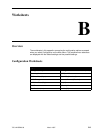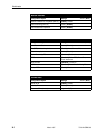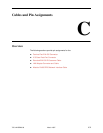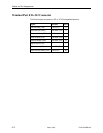
Configuration Option Tables
A-5
7510-A2-GB20-00
March 1997
Data Port Options Menu
For Data Port Options, refer to Table A-3. To access the Data Port Options
screen, follow this menu selection sequence:
Main Menu
→
Configuration (Load Configuration From)
→
Configuration Edit/Display
→
Data Port
Table A-3. Data Port Options (1 of 3)
Invert Transmit Clock
Possible Settings: Enable, Disable
Default Setting: Disable
The DSU clock provided on Interchange Circuit CT114, Transmit Signal Element Timing
DCE source (TXC), is phase inverted with respect to Interchange Circuit CT103,
Transmitted Data (TXD). Recommended when data errors are occurring due to long
cable lengths.
Enable – The DSU-supplied clock is phase inverted with respect to the transmitted data
TXD.
Disable – The clock supplied by the DSU on TXC is normal (i.e., not inverted).
Port (DTE) Initiated Loopbacks
Possible Settings: Disable, Local, Remote, Both
Default Setting: Disable
Specifies whether the DTE can initiate and terminate local and/or remote loopbacks.
The DTE loopback control is done through the Interchange Circuits specified by the
V.54 standard.
NOTE: Refer to
Running Network Tests
in Chapter 5.
Disable – No local or remote loopbacks can be initiated by the DTE.
Local – A local loopback can be controlled by the DTE, via the Interchange Circuit LL
(CT141), as specified by V.54. The DTE port remains in loopback as along as LL
remains on. Aborting the loopback from the ATI has no effect.
Remote – A remote digital loopback can be controlled by the DTE, via Interchange
Circuit RL (CT140), as specified by V.54. The remote equipment must be able to detect
the in-band V.54 loopback sequence.
Both – Both the local and remote loopbacks can be controlled by the DTE.
Bilateral Loopback
Possible Settings: Enable, Disable
Default Setting: Disable
When a DSU loopback is initiated, a local DTE loopback is also automatically initiated.
A Bilateral Loopback can be started by the ATI/NMS or by detection of a V.54 Loop 2 Up
sequence.
Enable – When Bilateral Loopback is enabled, running a DSU loopback also
automatically starts a local loopback. The local loopback ends when the DSU loopback
terminates.
Disable – Running a DSU loopback does not start a local loopback.
NOTE: Refer to
Running Network Tests
in Chapter 5.



